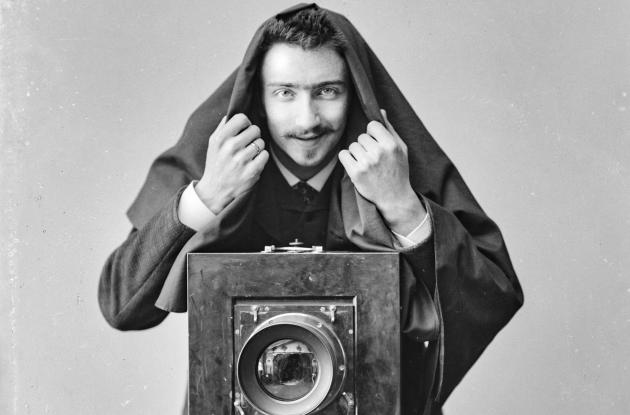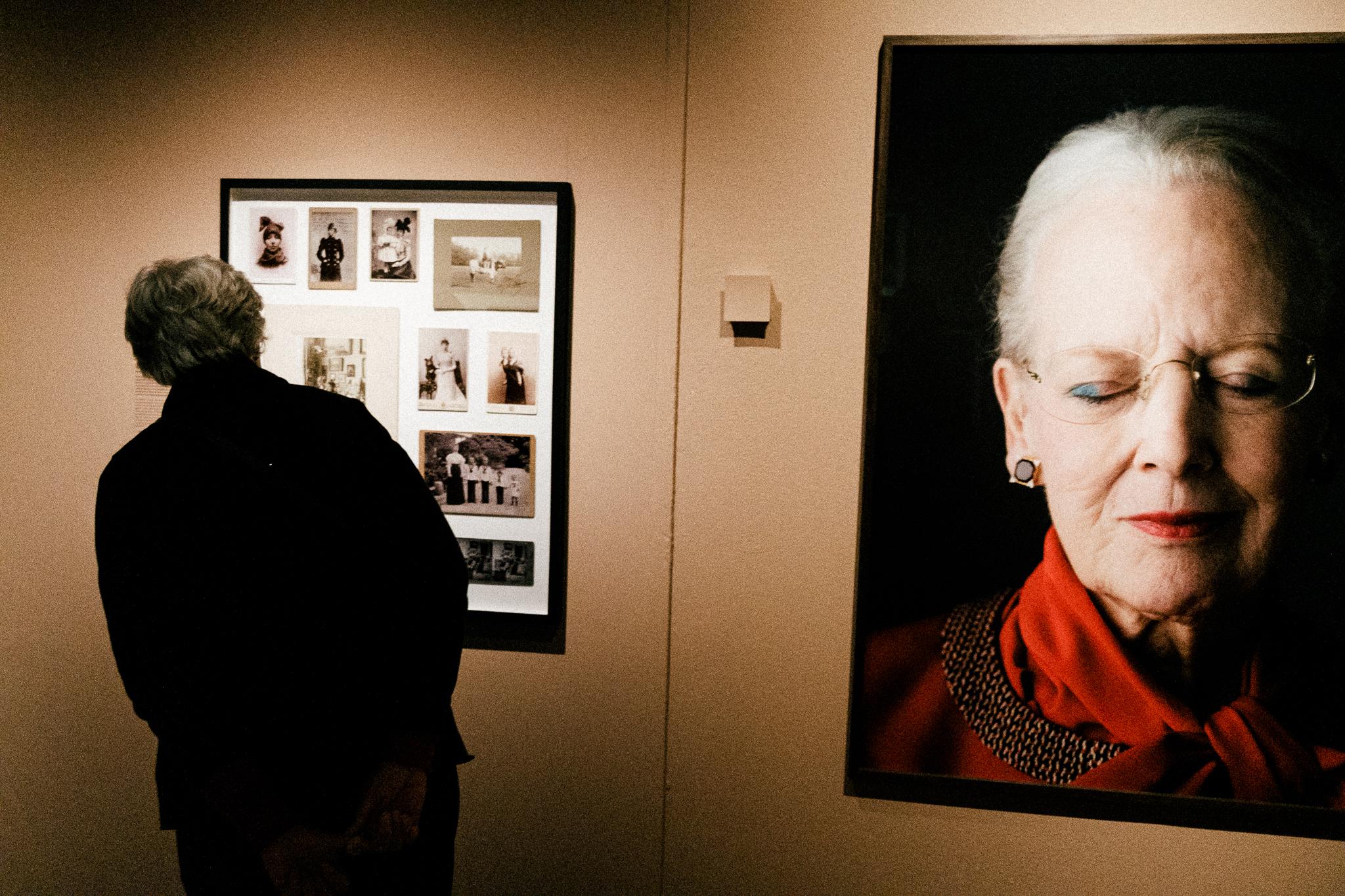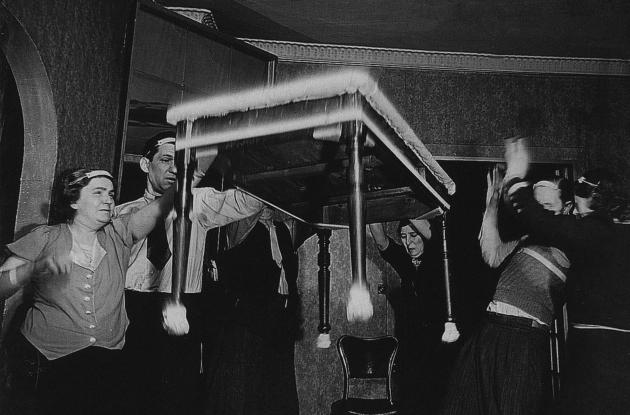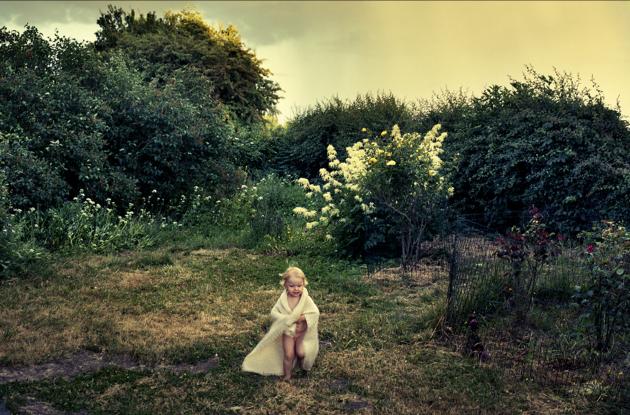The camera and us – the human being in photography 1839-2021
Denmark's first permanent exhibition on the history of photography with humans as motif.
The camera and us presents a selection of works from Royal Danish Library's photo collections, which contain several million images. The theme is human as a motif, and the exhibition asks what photography does to our perception of ourselves and our ideas about each other.
Podcast about the exhibition
Come and discover The camera and us. In this podcast, senior researcher and exhibition curator Mette Kia Krabbe Meyer talks about how photography has changed our view of ourselves and the world since the first people almost 200 years ago sat completely rigid in front of the new revolutionary invention, the camera.
The daguerreotypists, as history's first photographers were called, fascinated the world with the new invention in 1839. Never before had anyone seen themselves reproduced in such detail and so quickly. The well-liked images were perceived as pure magic, and suddenly the art of portraiture was no longer reserved for society's elite. Photographs of people spread throughout the world, and today they are everywhere.
For almost 200 years, the medium has become our most important means of communication and remembrance, while at the same time it has developed as a special art form. In The camera and us, the story is told based on different forms of photography, which all have in common that they characterize today's visual culture. From the first precious portraits created on silver-plated metal plates to the image stream of the digital age running through public and private life.
Podcast: The portrait photograph, the family photograph and the ID photograph
Learn about three of the photographic genres that you can experience in The camera and us. In the podcast, the exhibition's curator Mette Kia Krabbe Meyer talks to journalist and historian Monica C. Madsen.
From portrait to porn
Portrait photographers and paparazzi give us glimpses of the rich and famous that we otherwise don't have access to. Documentaries have shown us how others live under unjust social conditions, but they have also helped spread prejudices about a particularly dignified way of being poor. Family albums preserve our memories of the best moments, but can also create a brilliant image of the family's history.
The individual and the communities
The ID photo began as a simple paper photo for identification, but today are electronic signals that can be used for automatic facial recognition. In the press, we see people in moments that can become historic because they are photographed. In fashion photography, narrow body ideals are created, which are also dream images for new generations. Porn, the most prevalent form of photography on the Internet, helps shape our desire for images.
Photographs don't just show something, they do something to us. The reflection on what photography does to our self-image and our perception of others is something artists have long explored. Throughout the exhibition, the audience meets artists who create images of people, alone or in groups. Sometimes also by itself. Not least through their work, we understand how photography has been used to create and play with identity.
Podcast: Social documentary photography and community photography
Learn about two of the photographic genres that you can experience in The camera and us. In the podcast, the exhibition's curator Mette Kia Krabbe Meyer talks to journalist and historian Monica C. Madsen.
An abundance of photographers
The exhibition contains works by, among others, Arvida Byström, Per Morten Abrahamsen, Pia Arke, Richard Avedon, Claude Cahun, Julia Margaret Cameron, Krass Clement, Holger Damgaard, Jeannette Ehlers, Walker Evans, Per Folkver, Peter Funch, Charlotte Haslund-Christensen, Jesper Høm, Ditte Haarløv-Johnsen, Petra Kleis, Rigmor Mydtskov, Felix Nadar, Rie Nissen, Anders Petersen, Thomas Ruff, August Sander, Henrik Saxgren and Trine Søndergaard.
The exhibition was created by curator of photography Sarah Giersing and senior researcher, Ph.D. Mette Kia Krabbe Meyer, who both work on a daily basis in Royal Danish Library's special collections. Together, they have also produced the book "The Camera and Us", which was published in connection with the exhibition opening.
The exhibition is accompanied by an extensive dissemination program with both educational offers and audience activities.
Explore the digital exhibition
As a supplement to the physical exhibition in The Black Diamond, you can also explore some of the exhibition's subjects digitally. Here you can see major works from the national photo collection by Danish and foreign artists and experience how they use photography to create and play with identity.
Teaching "The camera and us"?
We have the teaching course Photo, identity and community targeted at both intermediate and secondary levels.
Teaching courses
We offer teaching courses with a teacher from the library for day care, primary school and youth education. Take a closer look at both current and upcoming offers.
Thank you
The exhibition is realized with support from the Augustinus Foundation and the Aage and Johanne Louis-Hansen Foundation.




